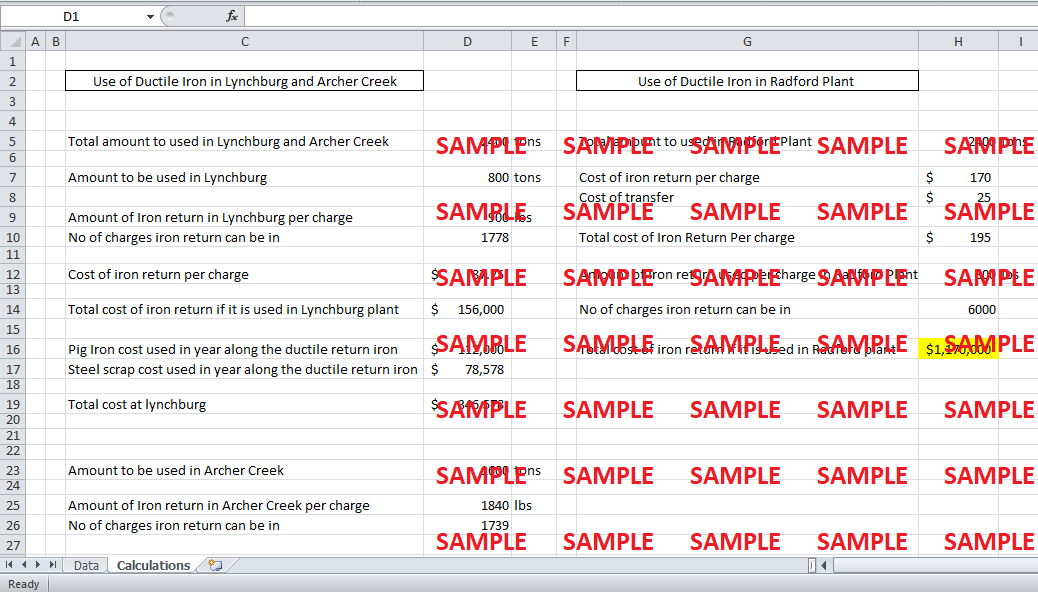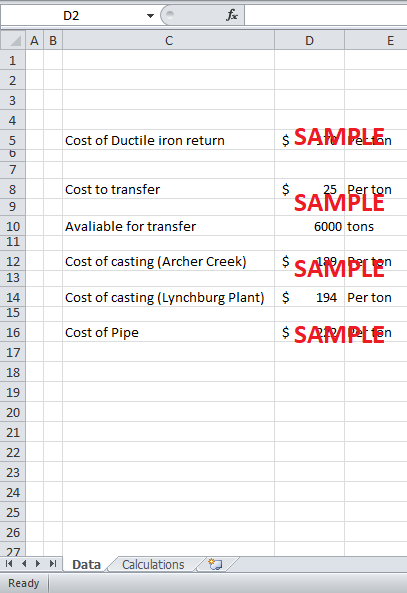Get instant access to this case solution for only $19
Lynchburg Foundry The Ductile Dilemma Case Solution
Lynchburg plow company had three major plants, two of which (Lynchburg and Archer Creek), were there for casting while the other one (Radford) was for preparing pipes. The two casting plants also produced a by-product named ductile iron return. This by-product could be used by the same plants in the subsequent casting or it could be transported to the third plant named Radford. The materials manager at Lynchburg Foundry was faced with a controversial decision of, whether he should transfer the iron return to Radford by accepting the transfer costs attached to it and use it in producing high-cost pig iron, or the iron return can be used in the same plants.
Case Study Questions Answers
The casting process has been further divided into 4 steps and produces by-product due to low yielding of finished goods (Approximately 50% to 60%). The four steps of casting included melting and alloying, cores and mold-making, pouring the iron and finishing. Apart from this, the pipe making process was high yielding (Approximately 80%). Both these process casting and pipe production, produced ductile iron return as the by-product, in the proportion of 50% and 10% respectively. Casting process could use its by-product in the subsequent casting but for the consumption of this by-product steel scrap and pig iron was required as the raw materials. Pig-iron was the most expensive raw material in the whole process while steel scrap had a very high melting point. Hence, if the company use the by-product in the casting it has to face the cost of scrap steel and pig-iron.
The pipe producing process could also use the ductile iron return as the complement of high costing pig iron. But there were limits to this option as the ductile iron return produced in the casting plants was only available after satisfying the 40% capacity of these casting plants. From the past quantities, it appears that the amount of ductile iron return available for transfer to Radford appears to be 6000 tons in one period. Apart from the iron return at the casting plants, Radford could also use the ductile iron return produced at the same plant. As Radford was yielding 88% of the good pipes hence, it would produce 12% of the charge as a by-product. The amount to be transferred to the Radford plant could be calculated by incorporating the transport cost and requirements of the casting plants.
The decision became controversial due to the fact that Radford plant has a greater efficiency of converting ductile iron return into the finished goods as compared to the Lynchburg and Archer Creeks.
Get instant access to this case solution for only $19
Get Instant Access to This Case Solution for Only $19
Standard Price
$25
Save $6 on your purchase
-$6
Amount to Pay
$19
Different Requirements? Order a Custom Solution
Calculate the Price
Related Case Solutions
- M&M Pizza Case Solution
- Marilyn Carlson Nelson and the Carlson Companies Renaissance Case Solution
- Martha Goldberg Aronson: Leadership Decisions at Mid-Career Case Solution
- Martingale Asset Management LP in 2008, 130/30 Funds, and a Low-Volatility Strategy Case Solution
- Massachusetts General Hospital and the Enbrel Royalty Case Solution
Get More Out of This
Our essay writing services are the best in the world. If you are in search of a professional essay writer, place your order on our website.



